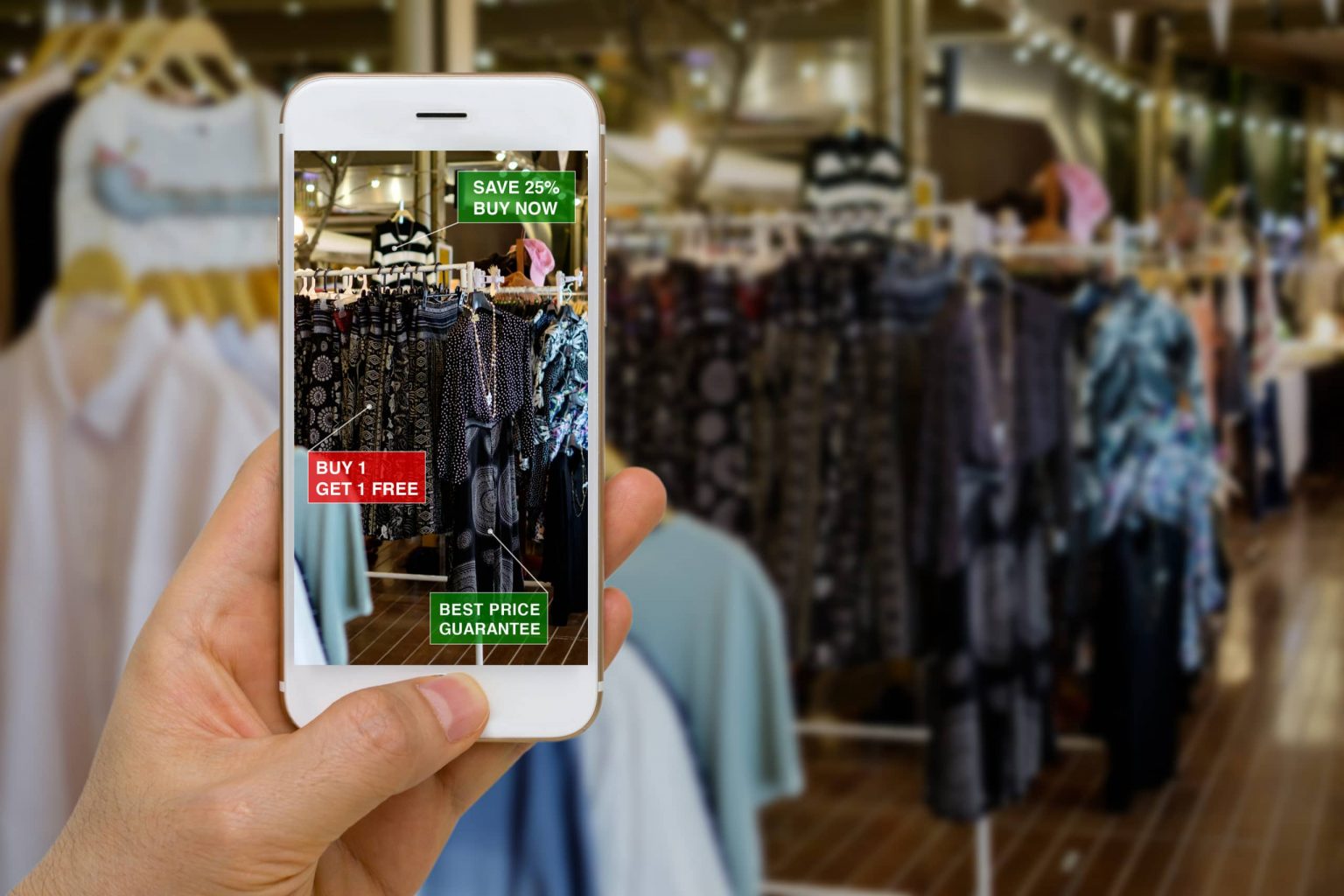A strong augmented reality marketing strategy doesn’t depend on the consumer having expensive equipment to enjoy. Instead, it’s about making AR accessible to everyone. Brands add AR to their marketing mix through mobile apps as a means to increase this access. AR headsets and equipment can be expensive, but thanks to mobile phones, brands are able to reach consumers as they shop using an innovative, augmented reality marketing strategy.
The best way to reach consumers with AR has become on mobile devices. The opportunity for brands to interact with consumers and get those consumers to engage with their products in a virtual environment can act as an excellent sales motivator. Many brands partner with third-party developers to offer this type of engaging content.
Augmented Reality Marketing Strategies in Action
AR is still a relatively new marketing strategy and is becoming a significant part of mobile technology in the retail industry. Already, we are seeing some ways that campaigns are being rolled out through mobile or even via browser-based options to get consumers to interact with products.
#1: Target’s Use of AR for Simplifying Online Furniture Sales
Retailer Target leverages AR to improve online furniture sales. Traditionally, consumers may have had concerns regarding online furniture purchasing as they were unable to view how this furniture would look in their home or if it would fit the space they’d selected for it. Target worked around this by creating an AR app that allows users to view a piece of furniture in their home by looking through their phone’s camera. This eliminated a common barrier to purchase.
#2: CoverGirl’s Browser-Based “Try It” Offers Virtual Product Interaction
CoverGirl chose to go in a different direction when creating an AR app to get consumers to interact with products. They created a browser-based app that allows users to try out five different makeup looks in real-time using their laptop or phone’s camera. Of course, the downside to this app is that it’s browser-based and requires no download, meaning that the brand cannot count on ongoing interaction with the app. Despite this, the strategy still works to improve the customer experience with the products, creating a memorable event which will lead to sales.
#3: Red Bull Engages Consumers With a Gamified App

UPC scanning is a strategy which can also work ahead of a purchase. This scanning is something Shopkick leverages through its innovative shopping app. Consumers can locate and scan product UPCs in-store to gain kicks (aka rewards points) for product interaction. The benefit of this program is it requires the consumers to physically interact with a product, which increases the likelihood of purchase.
#4: Budweiser Partners With the Cavaliers in Event Marketing
A final example of AR marketing in action comes through a Budweiser partnership with the Cleveland Cavaliers basketball team. The two worked together to provide an event-based AR experience. During live games, consumers could use their smartphones to play virtual basketball by scanning the scoreboard. The feature also worked for consumers at home and could be activated by scanning specific Budweiser merchandise. Essentially, the app boosted brand awareness and affinity by presenting AR as a branded opportunity.
One thing that all these campaigns have in common is that they do not require advanced AR technology to enjoy. Most consumers have phones which are capable of delivering these AR experiences, making mobile AR much more accessible. Of course, brands face challenges with the cost of creating these campaigns, which is why some turn to third-party app partnerships.
Working With Third-Party App Developers
Third-party app developers often provide a more cost-effective way for brands to test out the appeal of innovative apps, including AR features. As this is a specialized area of app development, third-party developers are typically well-positioned to offer this functionality. Third-party app developers, unlike retailers and brands, often only offer apps. As a result, they have the time and resources to create these options.
Third-party app developers often provide a more cost-effective way for brands to test out the appeal of innovative apps, including AR features.
These third-party partnership opportunities don’t stop at AR. Brands can leverage other popular features via third-party apps like rewards programs, location-based marketing, and gamification. Shopping apps are a prime example of this, as they can be used to supplement a branded app and offer more innovative features that the brand may not be willing to add to their in-house apps.
A strong augmented reality marketing strategy makes use of the tools consumers already have to participate. By using mobile in conjunction with an AR campaign, brands can create a marketing strategy which is inclusive and resonates with consumers. Third-party partnerships can also be a tool that brands use to add innovative features to their existing marketing strategy.
Shopkick allows brands to take advantage of innovative mobile features through an app that helps our partners reach consumers both at home and in the shopping aisle. For more information, contact us.
Image courtesy of supparsorn



